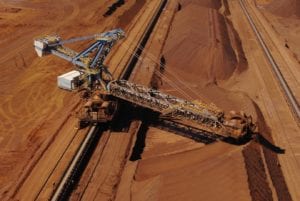The growth in both the number and size of data centers is having a major impact on power generation around the world. For example, during the opening plenary session of a recent data center conference the audience was treated to a staggering statistic- if we continue to process and store data in data centers the way we do at the moment, by 2040 all of the world’s energy will be consumed by data centers!
I asked Dave Johnson, Executive Vice President, IT Division for Schneider Electric what we could do to prevent that happening. Take a look at our interview here.
“Schneider is always trying to develop the most efficient solutions and designs to data centers,” he reassured me. “A lot of it comes down to being smart about the planning, design and deployment of the data center. It’s not just about efficient servers and efficient physical infrastructure products; it’s about designing the data center from the outset to be efficient.”
“But I think that the key issue we have to solve in the data center business is better matching the IT load to the physical infrastructure. When you do that you can produce a very efficient data center. We’re not going to get into this problem of using all of the world’s energy. You’ll see companies like Facebook, who have a very specific application, or companies that are doing Cloud scale services like Microsoft or Amazon, building the physical infrastructure to match the requirements of their data centers perfectly. They will also be able to do it very cost effectively and efficiently.”
The problem is a lot of the data centers today are not built in that way. They have been built without considering what had to go into them so they had to be constructed for a worst-case scenario. When you do that, you get a lot of waste and that’s really where that problem that was talked about earlier in the conference comes from. That’s the thing we have to watch.”
At the same conference in London, Schneider Electric launched its micro data center solutions, Micro DC, for the European market. I asked Dave how Micro DC helped address the overall efficiency challenge.
“There are many issues concerning energy efficiency,” he said. “But as far as Micro DC goes, these data centers are typically going to be used in very specific applications. So here we have one of those scenarios where we can perfectly match the application to the physical infrastructure. You optimize your physical equipment to the application needs which is a very efficient way to do things. Once you do that you are certain to use much less energy in that type of design.”
I asked Dave whether Micro DC and Edge computing applications will cause a proliferation of smaller data centers and if so, would such a trend actually help to reduce the amount of energy being used by data centers overall?
“Well if you centralize everything, or put everything out to the Edge, it really nets out to zero,” he replied. “I think, without wishing to repeat myself too much, that it really comes back to matching the application to the IT requirement and then to the physical infrastructure around it and if we can do that centrally as well as we can do it at the Edge and it works for latency and bandwidth issues it’s going to be a wash. But in reality, we have a much higher chance of success and of getting it right at the Edge.”




Conversation
The growth in both the number and size of data centers is having a major impact on power generation around the world.